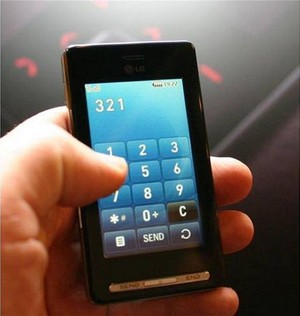Technology Drives Kenya’s Referendum
By Eric Sande

The onset of the broad band era following the landing of the fibre optic cables plus advancements in mobile telephony, have come in handy. The Interim Independent Electoral Commission deployed technology to facilitate the relaying of the just concluded referendum results from the polling stations to the nerve centre at Nairobi’s Bomas of Kenya. This marked a clear departure from the 2005 referendum and previous general elections which have been marred by massive rigging and consequent bloodshed.
The 2010 referendum was IIEC’s major litmus test in terms of equity, authenticity and efficiency in the compilation, collation and tallying of the results from the country’s 210 constituencies with more than 27,000 polling stations all within 48 hours. An adoption of an electronic means of receiving and relaying results in this historic referendum came in the wake of Kenyans’ craving for reforms in the entire electoral process, and the fulfilment of agenda 4 which is stipulated in the National Accord and Reconciliation Act (2008) signed by President Mwai Kibaki and Prime Minister Raila Odinga following the disputed 2007 presidential election results.
The use of broadband modems with static IP Addresses within a virtual private network was installed at each polling station to enable the officials communicate and relay the result in a faster, authentic and reliable method. Kenyans who registered electronically used finger print recognition for identity then proceeded to cast their votes. Results communiqué of the polling station or constituency was relayed through the short message service (SMS).
“We will want Africa to learn from us on how transparent results can be relayed to the electorate within the shortest time possible. This new technology of relay results would also be used in 2012 if approved by Parliament “, said IIEC Commissioner Davies Chirchir.
UN Volunteers Programme Officer Julia Albert-Recht said they had established an information centre where the messages sent through the SMS would be verified before being taken to the authorities.
Media houses were not left behind technology during the crucial moment of tallying the results. They too did set up their machinery in their communications centres to provide the required checks and balances for a fair and genuine electoral process.
“I welcome the use of technology to conduct the election, the process was very fast and I hope that by 2012 we may vote through our mobile phones,” said Viona Nacel, a Nairobi resident after voting.
Mr Dismas Ongondi, an IIEC ICT expert, said the results are collated as per the constituencies, with results from 80 per cent of all constituencies being received electronically. With the technology in place, the ICT team at the Bomas of Kenya was able to monitor the progress of all voting across the country. He added that all Kenyans voted manually and the results from polling stations were available on condition of the interested person also indicated the station’s official code.
The commissioners told a press conference at the Bomas of Kenya, that all returning officers and presiding officers were supplied with special phones for relaying the results only and that an assurance was given by the mobile phone operators that the phones and lines were used to relay the results to the national tallying centre were secure from any interference.



